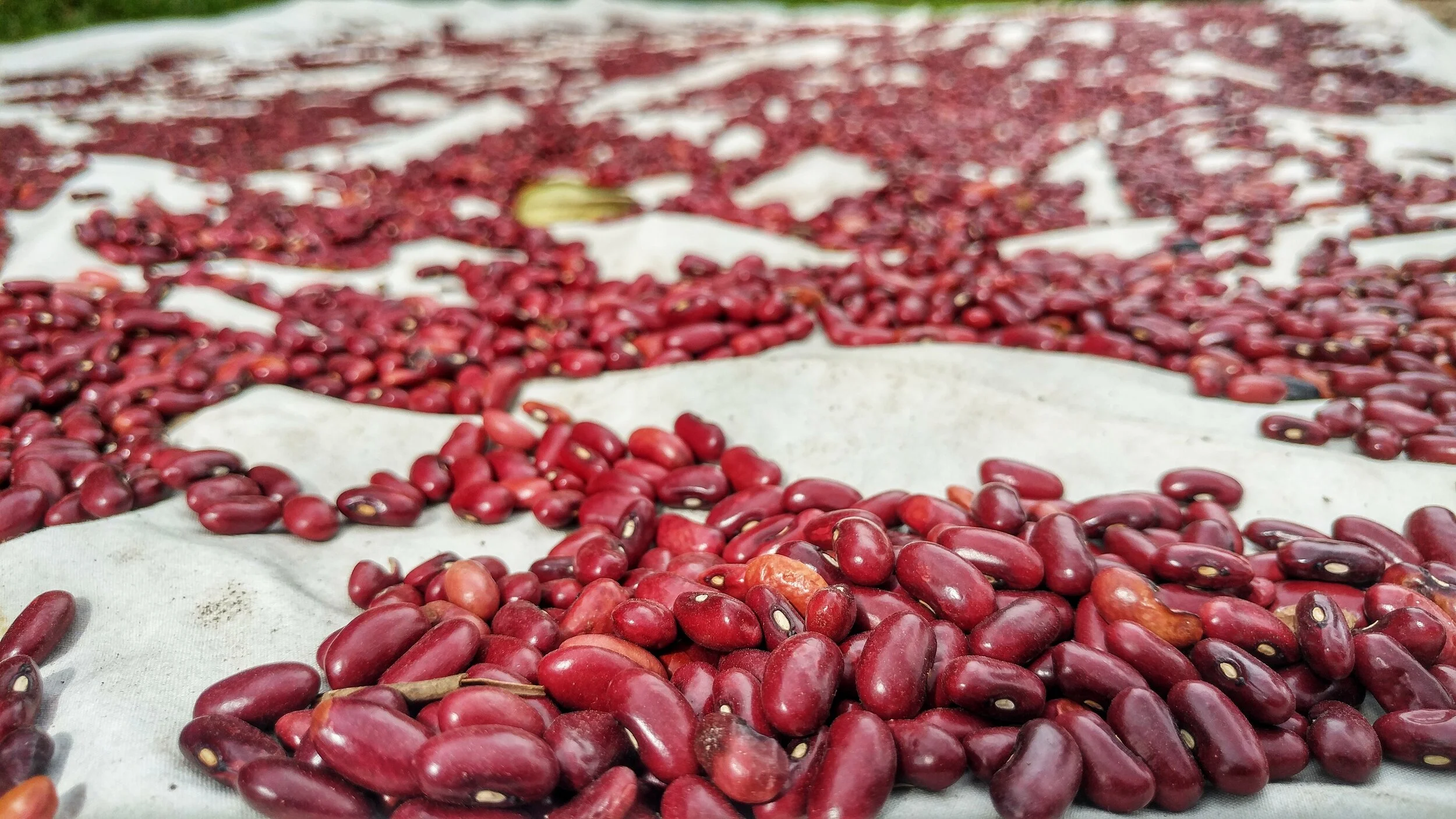Homemade Hoisin Sauce and Other Recipes with Fermented Black Bean Paste
By 2021 apprentice Cameron Conklin
We Love Beans!
Don Chepo winnowing his yearly harvest of beans
Beans are an important staple in our diet and a traditional food here in Costa Rica. Beans are a great way to provide vegetarian, balanced nutrition to large groups of people - full of complex carbohydrates, fiber, and protein. We consume beans in many forms at the Ranch, often as as pinto (a traditional Costa Rican rice and bean dish served at breakfast), as frijoles molidos con queso (refried beans with cheese), or frijoles baja (baked with tomatoes and onions).
Although we love our traditional uses, we also like to get creative. A few weeks ago we decided to start experimenting with fermented black beans, inspired by our love of fermentation and quest for a homemade hoisin sauce. Yumm!
But they are even better fermented!
Beans are packed full of nutrients, but can be difficult on the body, potentially causing flatulence and indigestion. So what is there to do? The answer is fermentation!
Beans fermenting for bean paste
By fermenting your black beans (or any bean), you are essentially letting lactic acid bacteria pre-digest the beans, breaking down the complex proteins into amino acids that the body can more easily absorb. The fermentation process also increases the lactic acid bacteria in the body, improving gut health and the microbiome.
We don’t ferment all of our beans, but this method is super easy and a great way to include delicious, extra nutritious bean paste into your condiments. We particularly like this as an addition to our asian style dishes.
Below are a few recipes that we have been adding to our meal rotations lately. I have to say this hoisin sauce is one of the best sauces I have ever had. Whip up some fermented black bean paste and start experimenting in your own kitchen!
Recipes
Homemade Fermented Black Bean Paste
8 cups of black beans (cooked)
8 tablespoons brine from previous ferment
Smash beans with a fork, breaking the skins, until about half have become a paste consistency
Fill the jar(s) with the beans
Add 8 tablespoons (1 tablespoon per cup) of brine from a previous lactobacillus ferment (homemade kimchi) or whey ferment (how to make dairy kefir)
Make sure to not fill your jar more than 3/4 full
Note: because the beans are already cooked, they will not have the lactobacillus bacteria naturally occurring on their skins. This requires the previously inoculated brine
Screw lids on the jars and let sit for 3 days to 1 week. Testing for taste. The beans will be sweet and sour and have become more paste like in consistency
Once the beans have reached your desired taste, you have your paste that can be added to all kinds of dishes, some examples below. Store in the fridge for months
Don’t be afraid of a little white mold that will form on your fermenting bean paste
Homemade Hoisin Sauce
1 cup tapa dulce (or your local sugar source)
6 tablespoons water
9 tablespoons homemade fermented black bean paste (see recipe above)
6 tablespoons soy sauce
2 tablespoons homemade vinegar
12 pieces of dried mamey sapote (any local dried fruit such as prunes)
1 1/2 teaspoons sesame oil
1 1/2 teaspoons homemade Chinese 5 spice (see recipe below) powder
Combine all the ingredients together and blend well
Can store in the fridge for months
Chinese 5 Spice
10 Star Anise
2 1/2 teaspoons whole fennel
1 small cinnamon stick
6 whole cloves
2 teaspoons black peppercorns
Blend all together super fine
Homemade “Ketchup”
1/4 cup homemade vinegar
1 teaspoon black peppercorns
5 whole cloves
1 star anise
1 cinnamon stick
2 tablespoons peanuts
1 teaspoon oil (lard or vegetable)
1 small onion diced
2 garlic cloves
4 small ripe bananas
4 tablespoons homemade fermented black bean paste (see recipe above)
1/2 teaspoon salt
1/2 teaspoons powdered turmeric
Homemade Chinese 5 spice (see recipe above) powder to taste at the end
(Adapted from “Miso, Tempeh, Natto And Other Tasty Ferments” by Kristen K. Shockey and Christopher Shockey)
Combine the vinegar, peppercorns, cloves, anise, and cinnamon stick in a small sauce pan. Bring to boil and simmer low for 15 minutes
Sauté the onion, garlic, and peanuts in the oil until slightly caramelized about 5 minutes
Combine the bananas, onion mixture, salt, black bean paste and turmeric
Once the the vinegar mixture is cooled, strain and add to the other ingredients
Blend everything together in a food processor
Your sauce is ready to be used immediately or you can put it in a jar to ferment for a few days. Remember to burp your jar daily as carbon dioxide builds up.
Your ketchup is ready when you like the taste! Store in fridge for months.
Homemade “Mustard”
To create this mustard, simply let your homemade “ketchup” ferment for about a week or more! This recipe was actually a beautiful accident. We went to the beach for a week, and I forgot I had left the ketchup to ferment while we were gone. When I got back, I expected it would be completely ruined, especially in the tropical heat. This condiment ended up being delicious, tasting and looking just like mustard. That is the beauty of fermentation! It will often turn your mistakes into delicacies.
Pro Tip: Don’t be afraid of a little white mold on the top layer. That’s just fine! Just scoop it off and enjoy what is underneath.
Experimenting to create your own sauces, condiments, etc is fun and exciting!
Want to Learn More
Check out our past blog articles about food creations. Also join us for a day workshop on fermentation.
Stay tuned for more interesting experiments happening here!





